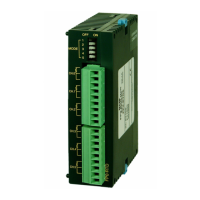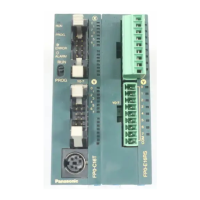How to troubleshoot flashing ERROR/ALARM LED on NAiS FP?
- WwilliamsamyJul 26, 2025
If the ERROR/ALARM LED is flashing on your NAiS Controller, it indicates a self-diagnostic error. Use the programming tool to check the specific error code. Alternatively, in ONLINE mode, select 'STATUS DISPLAY' to find the error code at the bottom of the 'STATUS DISPLAY' window.




